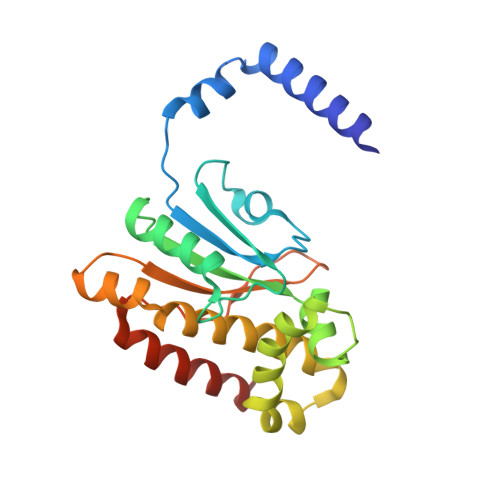Identification of a Novel Noncatalytic Bicarbonate Binding Site in Eubacterial beta-Carbonic Anhydrase.
Cronk, J.D., Rowlett, R.S., Zhang, K.Y.J., Tu, C., Endrizzi, J.A., Lee, J., Gareiss, P.C., Preiss, J.R.(2006) Biochemistry 45: 4351-4361
- PubMed: 16584170
- DOI: https://doi.org/10.1021/bi052272q
- Primary Citation of Related Structures:
2A8C, 2A8D, 2ESF - PubMed Abstract:
The structures of beta class carbonic anhydrases (beta-CAs) determined so far fall into two distinct subclasses based on the observed coordination of the catalytic zinc (Zn2+) ion. The subclass of beta-CAs that coordinate Zn2+ tetrahedrally with four protein-derived ligands is represented by the structures of orthologues from Porphyridium purpureum, Escherichia coli, and Mycobacterium tuberculosis. Here we present the structure of an additional member of that subclass, that from Haemophilus influenzae, as well as detailed kinetic analysis, revealing the correspondence between structural classification and kinetic profile for this subclass. In addition, we identify a unique, noncatalytic binding mode for the substrate bicarbonate that occurs in both the H. influenzae and E. coli enzymes. The kinetic and structural analysis indicates that binding of bicarbonate in this site of the enzyme may modulate its activity by influencing a pH-dependent, cooperative transition between active and inactive forms. We hypothesize that the two structural subclasses of beta-CAs may provide models for the proposed active and inactive forms of the H. influenzae and E. coli enzymes.
Organizational Affiliation:
Department of Chemistry, Gonzaga University, 502 East Boone Avenue, Spokane, Washington 99258, USA. cronk@gonzaga.edu
















